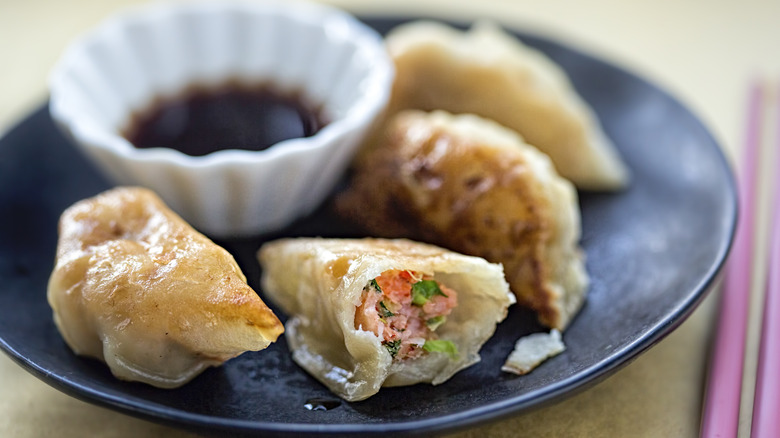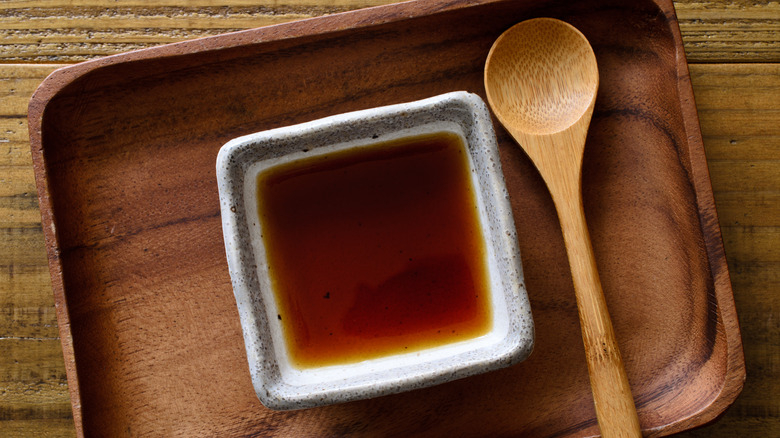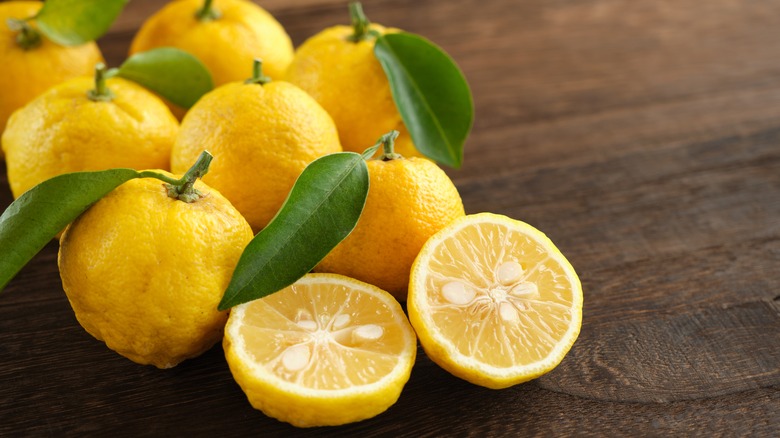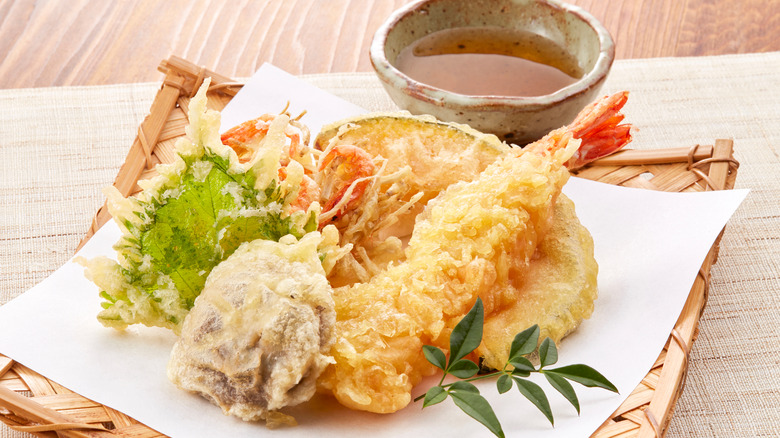What Is Ponzu Sauce?
Ever been filled with the anticipation of that first juicy bite of frozen dumplings — pan-fried, steamed, and piled in your bowl over piping hot rice, lovingly topped with fresh chopped scallions and toasted sesame seeds — only to be left disappointed? Maybe you ate them plain or just dipped them in soy sauce. They were good but missing that special something. While you could upgrade them in half a dozen ways, you might just be missing out on an ingredient that could take your little gyozas to the next level in one simple step. It's called ponzu sauce.
Tangy, salty, and slightly sweet, ponzu's power lies in its depth, balance, and lightness. You'll find it pooled in those tiny, rectangular dipping trays when hitting up your favorite haunts for Japanese favorites like sashimi, shabu-shabu, or takoyaki tempura (crispy doughy balls of chopped octopus). That's because ponzu — it means "vinegar punch" in Japanese — pumps up the umami, cleanses the palate with citrus acidity, and rounds out flavors with a bit of mild sweetness, never overpowering the flavors in your dish.
Is ponzu different from soy sauce?
So what exactly is ponzu? Lighter and thinner than soy sauce alone, ponzu's citrus tang is no stranger to brightening a dish and waking up its flavors. According to the biggest household name in soy sauce, Kikkoman, ponzu is traditionally made with soy sauce, citrus juice, mirin, bonito flakes, kombu seaweed, and rice vinegar.
Kikkoman and others sell easy-to-use bottles of a more simplified version of ponzu. Most of the commercially available brands commonly sold in American grocery chains contain only soy sauce, lemon, sugar, and rice vinegar. But there are imported brands of ponzu sauce available at Asian-American grocers that employ a more traditional approach to ponzu, using citrus fruits like yuzu, sudachi, daidai, yukou, and kabosu — each with their own unique flavors. These fruits range in sweeter or tarter varieties and can be used singularly or in combination with one another for a more complex flavor profile.
On the other hand, current-day soy sauce is a mix of fermented soybeans and wheat with water and salt. (Its ancient predecessor, jan, was originally made from fermented meat.) The main difference then, between soy sauce and ponzu, is that the former doubles down on that meaty umami flavor, while the latter is a riff or variation on soy sauce that combines the umami-rich goodness of soy sauce with the acidity of vinegar and the sweet bright notes of citrus.
How to make ponzu at home
Now that you know what ponzu is and what ingredients it contains, you might be ready to take a stab at whisking up some homemade ponzu of your very own. Just as styles of commercially available ponzu sauce vary, so will the ingredients and process for your homemade sauce.
If you're in a hurry — maybe you forgot to pick up a bottle for tonight's dinner — a quick approximation in line with the most common style of ponzu found in the U.S. is a convenient and easy fix. Simply mix a tablespoon each of soy sauce, rice vinegar, mirin, and lemon or lime together with one teaspoon of sugar, as says Epicurious.
For those who have a little more time, you might want to try your hand at the depth of flavor a more true ponzu can bring by simmering ingredients from your local Asian grocer. You'll need soy sauce, or tamari — traditionally gluten-free or shoyu, Japanese thin-style soy sauce; kombu seaweed, katsuobushi flakes (dried bonito flakes), mirin, and rice vinegar. Mix all that, before removing it from the heat to add a combination of Asian citrus favorites like yuzu and sudachi or even grapefruit and lemon.
As with any sauce, there is plenty of room to let your imagination run wild and improvise with variations from miso to dashi, and from Daikon to ginger. You can try togarashi or wasabi ponzu too.
How to use ponzu
Often referred to as a Japanese citrus vinaigrette, ponzu's thin light texture, bright notes, and briny umami make it a perfect salad and boke bowl topper. But its uses aren't just relegated to your leafy greens and as a tasty dipping sauce for sushi, sashimi, and gyoza. Ponzu also makes a delicious marinade for fish, poultry, and meats and when topping chilled Japanese tofu (or Hiyayakko). It's excellent in Japanese hot pot dishes, soba noodles, and udon soup. Use it in place of teriyaki sauce — or to perk up a variety of veggies cooked or raw, tempura or plain, with a bright zip of flavor.
Kikkoman even recommends ponzu as a flavorful addition to mayonnaise, stirring it into tabbouleh and risotto, braising it on chicken wings, and even using it in place of malt vinegar on classic battered fish and chips. (Basically pretty much everything!) And while most homemade sauces last only a week, even in the fridge, ponzu has a long shelf life — like soy sauce — of up to two years.



